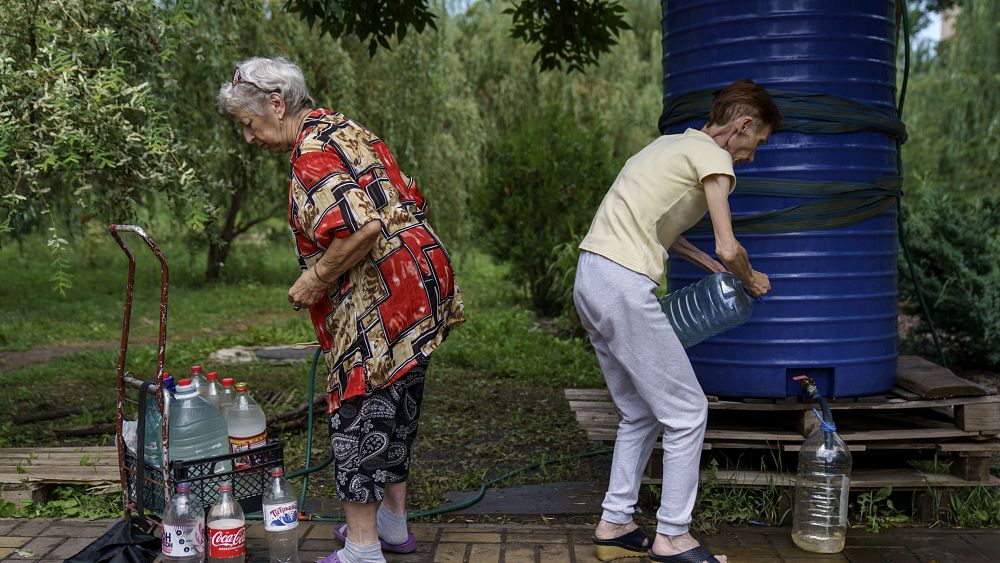Water crisis looms for Ukrainian city of Sloviansk

The echo of artillery shells thundering in the distance mingles with the din of people gathered around Sloviansk’s public water pumps, piercing the uneasy quiet that smothers the nearly deserted streets of this eastern Ukrainian city.
The members of Sloviansk’s dwindling population only emerge — a few minutes at a time — to fill up at the pumps that have been the city’s only water source for more than two months.
Fighting between Ukrainian and Russian forces near the key city in the Donetsk region has damaged vital infrastructure that has cut residents off from gas and water for months.
The water continues to flow for now, but fears grow that, come winter, the city, only seven miles (12 kilometers) from Russian-occupied territory, could face a humanitarian crisis once the pipes begin to freeze over.
“The water infrastructure was destroyed by the constant battles,” said Lyubov Mahlii, a 76-year-old widow who gathers 20 liters (5.3 gallons) of water twice a day from a public tank near her apartment, dragging the plastic bottles up four flights of stairs on her own.
“When there are bombings and sirens, we keep carrying it,” she said. “It’s a great risk for us, but what can we do?”
Only a fifth of the city’s pre-invasion population of 100,000 remains.
And local officials believe things will only get worse once the cold sets in.
Speaking from her tidy kitchen after one such trip, Mahlii said she boils some water for at least 15 minutes to make sure it’s safe for consumption.
The remainder is used for bathing, washing clothes and dishes, watering plants and taking care of a stray dog named Chapa.
Following the death of her husband, Nikolai, from diabetes four years ago, Mahlii shares her Soviet government-provided apartment with two bright yellow canaries and an assortment of houseplants.
Water she had gathered filled the plastic tubs and buckets stacked on every flat surface in her small bathroom, while empty plastic bottles lined the walls in her hallway. A meat and vegetable soup was cooking on an electric burner for lunch.
Another Sloviansk resident, Ninel Kyslovska, 75, gathered water from a tank at a park for marinating cucumbers in the sun that afternoon. She said the scarcity had upended all aspects of her life.
“Without water, you won’t get anywhere. I have to carry 60, 80, 100 liters of water a day and it’s still not enough,” she said.
“I don’t know what kind of a man you should be, to leave people without water. It’s sacred! Bread and water are sacred!”
Filling her bottles, Kyslovska said she sometimes avoids bathing to save herself a trip to the park, and often washes her clothing in a nearby lake.
She blamed the local government for the lack of running water, complaining that nearby Kramatorsk — just six miles (10 kilometers) to the south — still had water flowing from its taps.
Electricity cuts and the lack of heating could also see the fire risk soar as people try to heat and light their homes by other means.
Ukrainian officials are still trying to convince the Donetsk region’s remaining residents to evacuate as the war’s front line threatens to move westward and the inhospitable winter looms.
